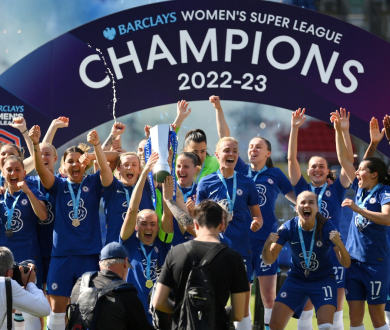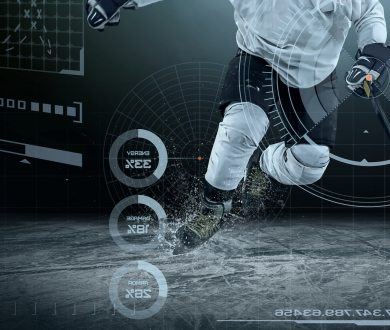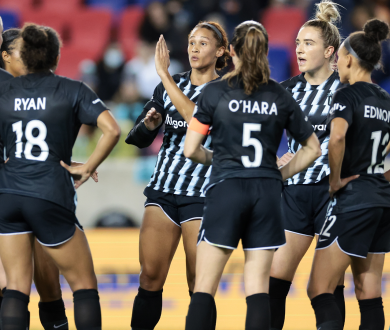
Artificial Intelligence for Injury Prevention: the Economics and Effectiveness
By Liv Bobby - SG Analyst
Introduction
Injuries are par for the course in professional sports: the job of professional athletes is to push their bodies to the extremes, which often presents an increased risk of physical harm. As talent in sports has increased and fans' expectations have grown, athletes have been adding to the physical load they exert on a season to season basis. With the NBA announcing their new in-season tournament, which will add to the number of basketball games played each season, and the fact that soccer games have been and most likely will continue to increase in game length (CBS), athletes are being asked to spend more time exerting themselves. These changes add more strain on athletes' bodies. Unfortunately, many avoidable injuries are severe and can permanently alter an athlete's career. Various factors contribute to sports injuries, including physical intensity, training history, age, and genetics. However, recent technological advances provide an opportunity to decrease injury risk and develop stronger, healthier professional athletes with improved career trajectories.
There has been a significant improvement in the quality and quantity of research dedicated to understanding and preventing sports injuries, but the rates of injury are high. Injury prevention is not a novel concept, however, comprehensive and effective strategies to help athletes wholeheartedly reduce their risk have yet to be developed at a wide-scale level. A 2021 study estimated an average of 62.5 injuries per 100 players in the four major North American Sports: MLB, NBA, NFL, and NHL (Bullock, et al., 2021). This same study determined that the most common injuries are sprains, strains, and knee injuries — all considered preventable. Ankle injuries and knee injuries can be prevented through strengthening exercises and proper rest, there will always be freak accidents but there are steps that can be taken to reduce risk for general injuries.
The unique physical demands of basketball make NBA players prone to lower-body injuries. Basketball places notable strain on muscles and joints due to the nature of the sport, which requires running, jumping, and directional changes. They commonly suffer ankle sprains, knee injuries, and hamstring strains.
When a player suffers an injury, there are financial losses that the team and sport suffer. This is in addition to the negative performance effect it has on the team and the potential psychological effect of injury on the player. Injury is one of the biggest challenges for an athlete, and the ability of teams to better predict, and thus mitigate, injuries is crucial.
In recent years, the emergence of Artificial Intelligence has provided an opportunity for unprecedented access to data-driven decisions in various fields, including the sports industry. These analytical tools have been used in various settings to essentially "get inside" the physical state of the athletes through thousands of data points that present a comprehensive picture of athlete health and performance. This creates a new ability to better understand athlete muscle fatigue, workload, and physical strain to mitigate injury risk. These technologies are being implemented in both athlete training and games to enhance performance and improve the quality of the games — which helps to develop sports for enhanced fan viewership and longevity of athlete careers.
With AI’s rapid development and continuous improvement, there are various market options for AI injury prevention companies. Microsoft and IBM both provide AI services and platforms that have been implemented in professional sports settings for data analysis and injury forecasting. Other trailblazing companies include Zone7, Sparta, and Catapult. However, in the sport of basketball, there seems to be a somewhat untapped opportunity. The current AI companies are more focused on soccer and football, but the efficacy of these tools in basketball is less accessible to the public.
The current paper will use publicly available NBA 2022/23 season injury data and market research of AI injury prevention companies to determine the financial benefit of implementing AI software to reduce injury risk.
In the 2022/23 season, there were a total of 5,900 man games lost (MGL) due to 388 player injuries. Players who were out with injuries earned a total of $812.3 million for the 2022/23 season. This money was paid to players who were unable to participate in games, representing what in theory can be viewed wasted investments and resources. This payout is already factored into contract agreements; however, this paper quantifies the cash earned while injured as a loss for the team since they are losing contract time and value.
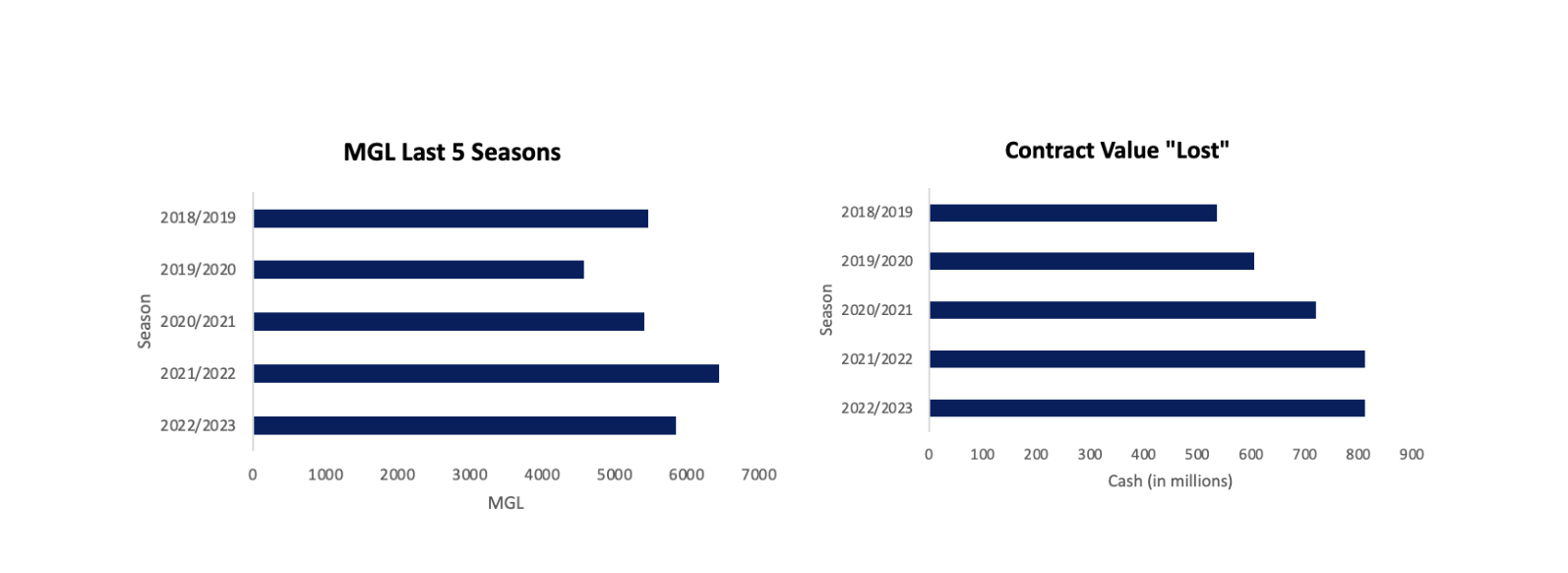
The most common injuries in the season were ankle, knee, foot, hip, and hamstring. Additionally, many athletes cited injury management as a cause of absence. These muscular and joint injuries are typically preventable by taking certain precautions and managing workload — not considering freak accidents.
The Golden State Warriors were one of the teams with the most contract value lost to injuries — $42.7 million. Their star player, point guard Stephen Curry, suffered various injuries during the season, missing 26 total games and earning $17.1 million while injured. As expected, injured higher contract value players earn more while injured than their teammates. Curry made an average of $658.7 thousand per MGL, whereas his teammate, Andre Iguodala, made $32.2 thousand per MGL. These higher-value players are more expensive to the team while out of play but also generate more revenue on the court: Curry's presence on the court tends to result in higher ticket prices for the Warriors (Budelli, 2021).
In addition to having a direct financial effect via contract payments without on-court performances, athlete injuries can negatively affect team performance. Karl-Anthony Towns, the Timberwolves All-Star player, suffered a grade 3 calf strain this season and was out of play for 53 of the 82 games. He made $21.7 million while injured, and the Wolves' offense struggled in his absence. Before Towns went out, the Wolves were ranked 16th in offense efficiency in the NBA, and while he was injured they dropped to 28th. They ended the season with a 42-40 record, a drop from the previous season's record of 46-36. Many factors play into a team's season record, but one is injuries and the loss of key players. It is difficult and not straightforward to quantify the effect of injury on a team's performance and record, but injuries are undesirable, and their impact is detrimental to the athlete and team.

Performance Decline Insights
A 2021 study provided insight into the economic impact of anterior cruciate ligament (ACL) tears in basketball (Vaudreuil et al., 2021). The researchers were able to quantify the costs of recovery, player pre-injury success level, and salary. Using public NBA records, they found a cumulative economic loss of $99 million in ACL tears from 2000-2015, with an average cost of recovery (COR) of $2.9 million per player. They also found that players had a significant player efficiency rating (PER) drop of -7 points on average, and no players repeated as All-Stars post-reconstruction. Although the overall return to play rate was high, there was a consistent decrease in performance, demonstrating the continued effect of injury on athletes (Vaudreuil et al., 2021).
To add insight into the continued effects of injury, the current study analyzed the effect of an injury on PER between the 2017/18 - 2021/22 seasons. PER is a value that takes into account various player metrics: including points per game, minutes played, etc. League average PERs have been calculated to be about 15, with a maximum of 30.
Due to the vast amount of data, the current study analyzed the ten players each season who received the most contract value while injured. Since there was a wide range in MGL per injury, we created two measures: one average PER drop for players missing between 1 - 40 games and another average PER drop for players missing between 40 - 82 games in the season of injury. We attempted to remove the players from the dataset if they had suffered consecutive injuries, however, due to some limitation in available data, there were some players with consecutive injuries included. The difference in PER was calculated between the season pre-injury and the season post-injury to determine performance drops. This is a simple insight, and therefore it does not account for various factors: severity of injury, injuries past the +-1 season mark from the current injury, on-court time, type of injury, and other changes within the team environment that could contribute to changes in an individual’s PER. Without controlling for these factors, for the higher range of MGL there was an average of a 1.3 drop in PER from one season pre to one season post injury. For the lower range of MGL there was an average PER drop of 1.2.
Considering the average PER in the NBA of 15, this represents about a 8 - 9% drop in overall performance. The average NBA contract in the 2022/23 season was $9.7 million. Paying a player their full contract while they are performing at 91 - 92% of what they were capable of before injury is a loss of between $776 - 873K depending on severity of injury as determined by MGL.
A Review of the Current AI Injury Services
Artificial Intelligence is currently used in professional sports for various injury prevention methods. AI-powered wearables help track athletes' movements and utilize biomechanics to identify areas of weakness or fatigue. AI video analytics services can be used to analyze game and practice footage to mitigate potential injury risks. This data and feedback can be used to develop personalized injury prevention programs, improve game plan techniques, and help athletes stay healthy. As AI products continue to develop, there will be increasingly more effective and innovative services to prevent injuries in professional sports.
Injury prevention AI companies essentially work in three steps:
Collect data through technology in training and games
Identifying athlete's injury risk using pattern recognition algorithms
Recommending modifications to staff to distribute workload and implement drills that reduce risk
Although wearable technology and data analysis related to player health has been used for years in professional sports, the extensive abilities of AI present new opportunities to get better, more impactful insights into athlete injury. The gap between injury prevention potential and the field's actual value is considerable because of the various factors that play into injury and the variable of human performance. Injuries are only predictable to a certain extent, but data suggests that AI can help prevent injuries that are considered "more predictable."
By undergoing training, AI models gain the ability to predict the likelihood that injuries are sustained. Through supervised learning scenarios, player data is collected over multiple previous seasons. Metrics such as overall matches, warm-up time, distance run, and contact hits with other players would be recorded if a player sustained an injury. This outcome and data leading up to the outcome are fed to a machine learning (ML) algorithm which then learns patterns (Chmait, Westerbeek 2021). Extensive data is required to train an AI algorithm to predict future outcomes. When the data is available and robust, the AI prediction mechanisms' accuracy is significant.
Details on the algorithms and methods behind the current AI injury prevention companies are not publicly available; however, there are various case studies and company-published statistics that provide insight into their accuracy and potential.
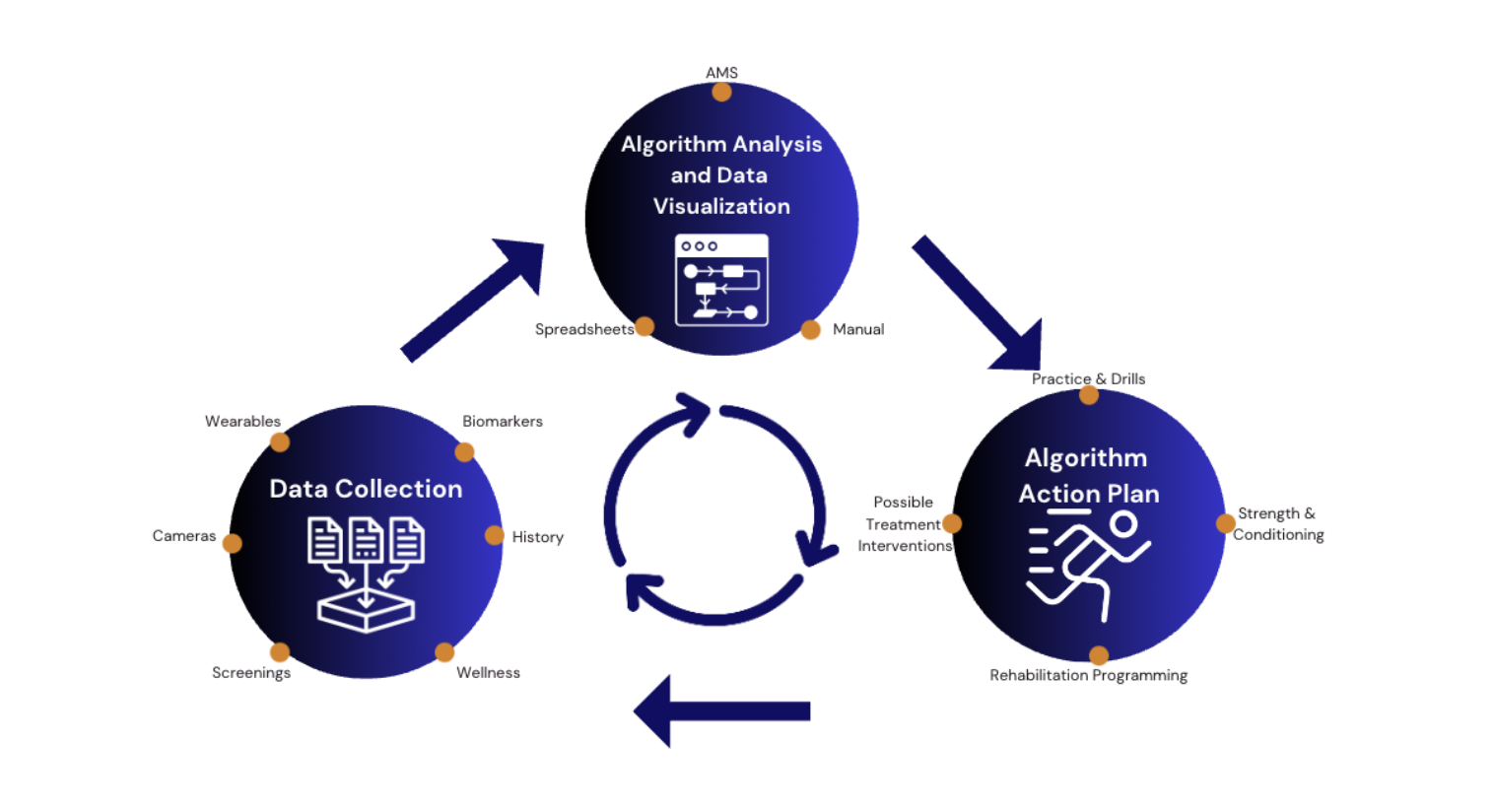
Zone7
Zone7 is one of the leading AI for injury prevention companies. Although they don't have case studies published on their efficacy in basketball, the results published from partnerships in other sports indicate the product's potential to predict injury based on datasets that would have shared traits across all sports. Additionally, the company has published a validation study using retrospective workload data from 11 soccer teams to review their software's accuracy in predicting sustained injuries (Buchanan & Zone7 team, 2022).
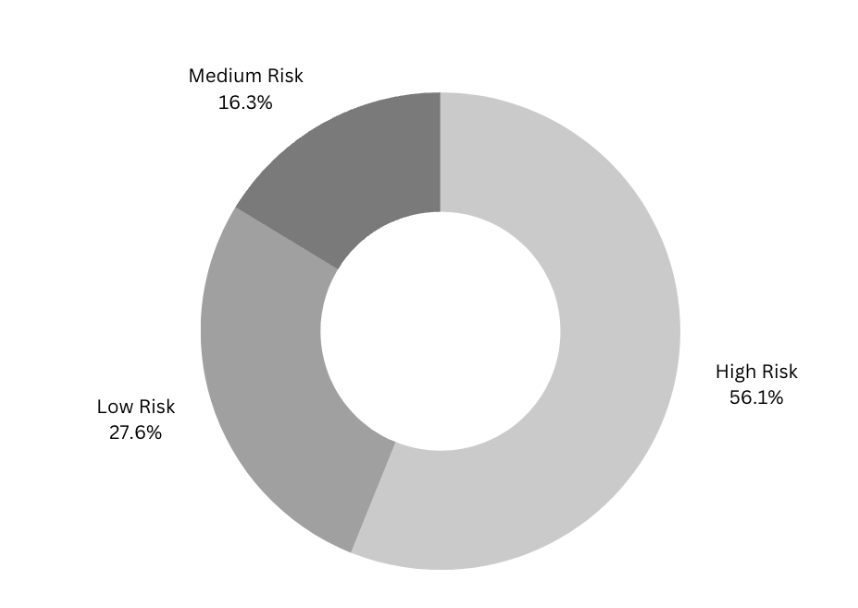
Zone7 provides daily injury risk forecasts based on client datasets, allowing sports medicine teams and coaching staff to better structure their training plans and game-time decisions. The product takes big datasets and narrows them down into digestible insights. Automated data-collection streams provide outputs of daily risk and severity forecasts, optimal workload plans, and biomechanical deficiencies (Zone7).
In their retrospective analysis, Zone7 provided a preliminary assessment of the efficacy of their product. By putting in historical data, they could compare their software-provided outcome to the actual outcome. They cross-referenced 423 injuries for their dataset. In this comparison, Zone7 claims their product delivered a 72.4% accuracy rate in predicting injury. The software also categorizes forecasted injuries into high risk and medium risk; 56.1% of predicted injuries were categorized as high risk and 16.3% medium risk. The severity of sustained injuries that the software predicted accounted for 65.4% of the man-days lost between the teams.
Probility AI
Probility AI uses data to create specific AI platforms unique to client organizations. They provide insights into which individuals are key players in your organization and focus on three aspects of an individual:
Availability (injury and cognitive incapability)
Reliability (response to critical decision situations)
Capability (matching organization goals and individual traits)
ProbilityAI is present in various fields, including professional sports and groups like first responders, the military, and healthcare organizations.
Within the sports industry, the company uses AI to address problems and provide data-driven solutions, from budget optimization to player training. Their service of Predictive Analytics has been implemented in the NFL, and they claim they have been able to predict with 96% confidence which players will miss time in the following season based on performance and injury data. With their algorithms, they have insights 20 years into the future regarding career longevity, allowing them to inform NFL teams about their future roster concerning risk and health. ProbilityAI's algorithm considers extensive data, including where a player went to college, workload demands, etc., demonstrating the depth of input for AI models (Shapiro & Velte, 2023). This provides teams with data to make present-day decisions and interpret decision impact on future outcomes.
Sparta Science
Sparta Science, a "movement health intelligence" company, has a partnership with the NFL, which entails collecting player data and medical assessment information to determine injury risk (Sparta Science). Their software helps identify muscle overload areas. Sparta takes each player through a functional screening process to collect initial data. One of their primary products for data collection is a force plate which assesses load management. Athletes jump on plates connected to a data-collection system, and through the processed scores, areas of overuse, injury risk, and muscle weakness are outputted. The publicly available information on the impact of Sparta Sciences’ technology is lacking. The data provided by teams to AI companies is confidential and the company-specific methodology is proprietary, making it difficult to fully understand the power of the product.
Microsoft & IBM
Microsoft and IBM have a strong history of implementing their technology products into sports. Microsoft has a league partnership with the NBA for CourtOptix, which gives next-gen intel behind every shot, pass, and play (Chokshi, 2022). The platform, Microsoft Azure, integrates individual team data to help staff and players better understand their on-court performance, providing transformative insights for players and fans.
IBM published a case study on their work with the Louisville Women's Basketball Team. They utilized IBM and PMsquare (data science company and IBM partner) to build a custom SPSS Modeler (predictive model) and IBM Cognos Analytics platform that captures and models player data transforming it into a visual breakdown for the athletes and coaches (IBM). Working with this custom software, the team achieved 95% player availability for games and practices, 92% injury predictability with zero false negatives, and 20% time saving by automating the data collection process. The case study with the team confirmed that "most injuries aren't freak accidents; they result from a longer-term aggregation of fatigue, stress, and other factors."
The "Downsides" of AI in Sports
However, doubt always comes into consideration: would the player have stayed healthy if they were left in the game? There is a tradeoff between adhering to forecasting data and deciding to leave a player in: should the team risk injury or take a key player out early? A combination of injury forecasting and play-by-play prediction could provide more helpful insights into if a player is better off taking the bench or staying active.
Some argue that common sense and simple math can replicate the science behind injury prevention technology. It is quite predictable that if an athlete overuses a muscle or does not correctly cross-train, they are at a higher risk of injury. That insight doesn't require expensive wearables or data analysis platforms. Sports medicine experts understand that simple steps, such as stretching and strength building, can result in injury mitigation.
A 2019 study focused on a particular metric, acute chronic workload ratio (ACWR) to predict athlete injury risk (Bornn, Ward, Norman, 2019). Various research papers have analyzed the correlation between ACWR and athlete injury and have frequently found statistically significant results. Bornn and his team used daily training loads through one season for Italian soccer and American football teams. Using sensors and anthropometric measurements, they calculated total physical load per player. Acute load was defined by a 7-day average of load, and chronic load was the corresponding 28-day average. ACWR is simply acute load divided by chronic load. With this metric, they were able to identify an effect of training schedules on injury frequency. The study notes that training load is not the only measure that contributes to injury, but it does provide some insight and predictive power. Thus, non-AI powered solutions were effective in quantifying risk and predicting injuries.
Another perceived risk of implementing AI in professional sports for injury reduction is the potential for false positives — the software incorrectly declaring that a player is at risk. If the software is placing risk alerts on players that aren't almost 100% accurate, there is a worry about what is being lost by listening to the data. There is also concern that all the predictions and formulas take the "humanity" out of sport, however, failing to step in and prevent injuries when the software is available is not exactly a more humane alternative. Once injury prevention software is implemented and a coach is alerted that a player is at risk, there becomes a moral pressure to take a player out of the game. If you know with a certain degree of certainty that a player can become injured, you could make the argument that you are liable if you keep the player in the game and an injury occurs. Thus, being armed with data comes with the pressure to act upon it.
Conclusion
To conclude, although there is some doubt surrounding the implementation of AI for injury prevention, there is also unimaginable potential for the software to change sports and professional sports careers for the better. The power of AI comes in the exactness and specificity of individual athletes. Everybody operates differently and responds to physical stressors differently, and AI data insights can provide more personalized results and training plans. Additionally, expert understanding of sports-related injuries has existed for ages, yet injuries are still prevalent. Although the software analyzed in this paper did not have results specific to basketball, other than the IBM and University of Louisville case study, the data still provides insight into the potential benefits of injury prevention in basketball. Soccer and basketball share knee and ankle sprains as their most common injuries. To estimate how much the existing software can improve the injury rates of basketball, we use the results from existing public data even though it is not specific to the sport. AI will not be able to prevent every injury, and freak accidents still occur, but according to different AI software injury companies, 72-92% of injuries are preventable. There is a massive opportunity for injury reduction, which could save $585 - $747 million and 4,200 - 5,400 MGL (based on 22-23 NBA data). This is an average of about $20 - $25 million per team in the NBA. For future research, it would be interesting to quantify the impact of injury prevention through financial loss and gain per game in a season. How much does one player's absence affect team revenues and ticket sales? In addition to contract money "lost," how much is spent concerning the cost of recovery, and how much investment is lost from player efficiency declines post-injury? It would also be interesting to use the existing AI software and perform a retrospective analysis with publicly available data on basketball injuries to analyze efficacy. However, the software is proprietary to each company, so this information is difficult to obtain. Additionally, for the section on PER changes, the present paper analyzed a range of injury severity and it would be more insightful to look into how different amounts of MGL affect PER by finding sub-averages within the available data and accounting for variables such as player age, severity of injury, etc.
Using our network at Sportsology Group, we were able to obtain an estimated range of the cost of AI injury products. In the past the MLB has purchased a data product that was around $1 million per year, and the NBA is looking into less advanced products costing between $200 thousand annually. Assuming the $1 million high range cost and the $20 million low range savings per team, the net money saved from AI implementation would be $19 million. Assuming the $200K low range cost and the $25 million high range savings per team, the net money saved would be closer to $25 million. These are estimates based on simple, initial calculations and assumptions, however, they provide some insight into the range of money that could be saved through AI implementation.
In conclusion, the potential savings from AI for injury prevention should be studied and explored more by individual teams, and failure to implement this prediction technology could be at a loss to both the franchises and their players.
